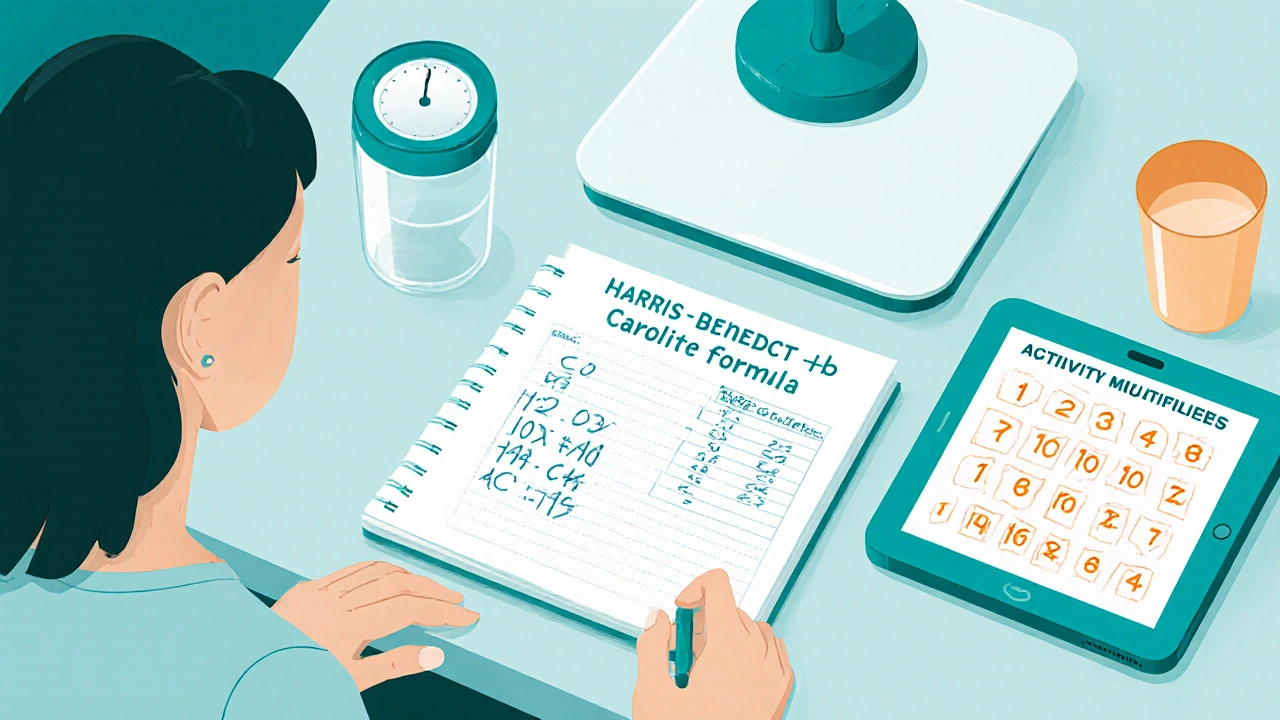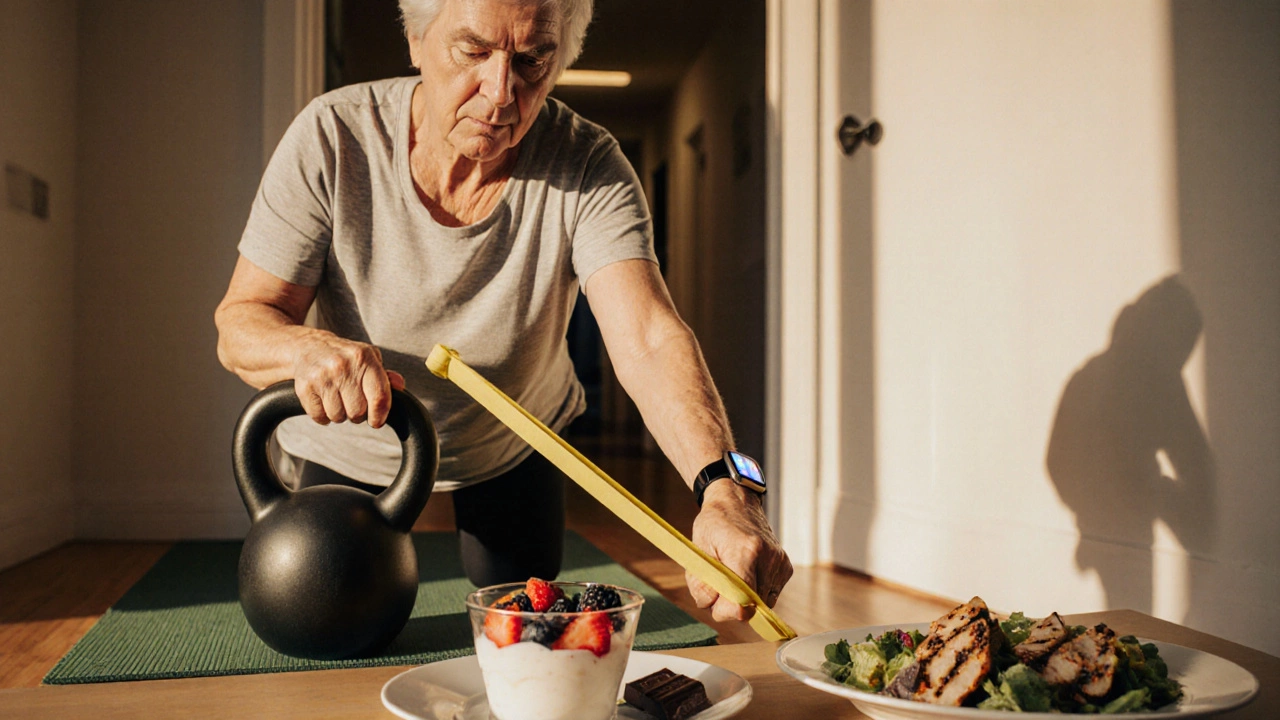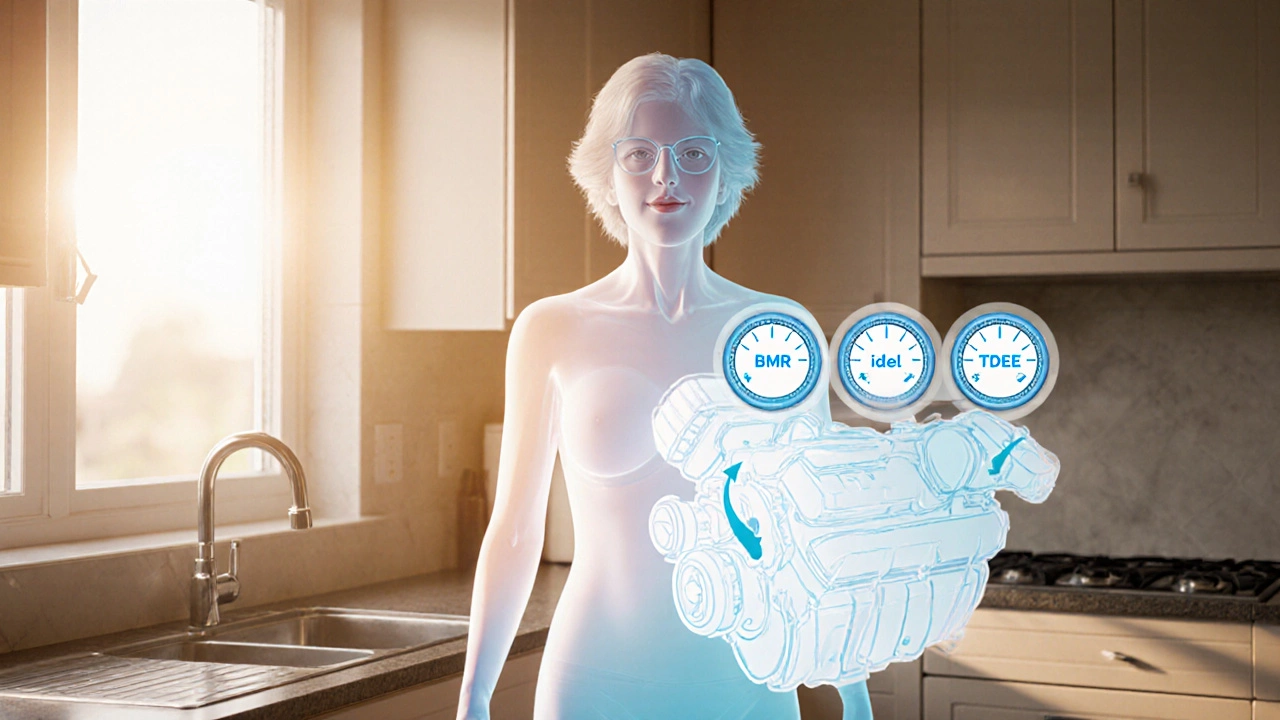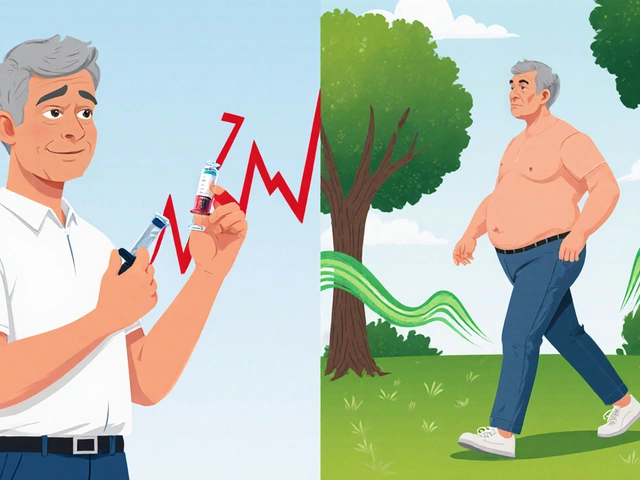Calorie Calculator for 55-Year-Old Women
Your Inputs
Results
Enter your information to see your results
Based on Harris-Benedict equation for women (age 55) and standard weight loss guidelines.
Note: Do not go below 1,200 calories without medical supervision.
Key Takeaways
- Use the Harris‑Benedict equation to estimate your Basal Metabolic Rate.
- Multiply BMR by an activity factor to get Total Daily Energy Expenditure (TDEE).
- A 500‑calorie daily deficit typically yields 1lb of weight loss per week.
- Adjust protein intake to 1.0‑1.2g per kg of body weight to preserve muscle during menopause.
- Re‑calculate calories every 4‑6 weeks as weight and activity change.
Understanding Calorie Basics
When you hear the word calories the unit of energy your body uses for every function, think of it as fuel for a car. Your body needs a certain amount just to keep the engine running at idle-that's the Basal Metabolic Rate (BMR)the calories burned while at rest, without any movement. Anything you do beyond resting-walking, cooking, or even fidgeting-adds to the total, which we call Total Daily Energy Expenditure (TDEE)the sum of BMR, activity, and the thermic effect of food.
Step‑by‑Step Calorie Calculation for a 55‑Year‑Old Woman
- Gather your basic stats: age (55), weight in kilograms, height in centimeters, and typical activity level.
- Apply the Harris‑Benedict formula for women:
BMR = 655 + (9.6 × weightkg) + (1.8 × heightcm) - (4.7 × ageyears) - Choose the multiplier that matches your Activity Levelhow much you move in a typical day. Use the table below for guidance.
- Calculate TDEE: TDEE = BMR × Activity Multiplier.
- Set a calorie goal that creates a safe deficit (see next section).
| Activity Level | Description | Multiplier |
|---|---|---|
| Sedentary | Little or no exercise | 1.2 |
| Lightly active | Light exercise 1‑3days/week | 1.375 |
| Moderately active | Moderate exercise 3‑5days/week | 1.55 |
| Very active | Hard exercise 6‑7days/week | 1.725 |
| Extra active | Very hard physical job or training twice daily | 1.9 |

Setting a Safe Calorie Deficit
Most health authorities agree that a daily deficit of 500kcal is sustainable and leads to about 1lb (0.45kg) of weight loss per week. For a 55‑year‑old woman whose TDEE might sit around 1,900‑2,200kcal, the target range would be roughly 1,400‑1,700kcal per day. This is where the calories for 55 year old woman phrase becomes the practical number you’ll aim for.
Remember that cutting more than 1,000kcal can trigger hormonal imbalances, especially during Menopausethe natural transition that often brings metabolic slowdown. A modest deficit preserves energy, supports thyroid health, and reduces the risk of nutrient deficiencies.
Adjusting for Menopause & Muscle Loss
After 50, women tend to lose lean muscle at about 0.5‑1% per year, which drops BMR. Counter this by prioritising protein. Aim for 1.0‑1.2g of protein per kilogram of body weight daily. For a 70‑kg woman, that’s 70‑84g of high‑quality protein spread across meals.
Strength training twice a week-think body‑weight squats, resistance bands, or light dumbbells-helps retain muscle, keeps metabolism humming, and supports bone density, a critical concern during menopause.
Sample Meal Plan & Macro Guidelines
- Breakfast (300kcal): Greek yogurt (150g) with berries (½cup) and a sprinkle of flaxseed.
- Mid‑morning snack (150kcal): A small apple and 10almonds.
- Lunch (400kcal): Grilled chicken breast (100g), mixed greens, cherry tomatoes, half an avocado, olive‑oil vinaigrette.
- Afternoon snack (150kcal):> Cottage cheese (½cup) with cucumber slices.
- Dinner (500kcal): Baked salmon (120g), quinoa (½cup cooked), steamed broccoli, lemon‑herb sauce.
- Evening optional (100kcal): A square of dark chocolate (≥70% cocoa).
These totals hit roughly 1,600kcal with 30‑35% protein, 25‑30% fat, and 35‑40% carbs-an easy balance for satiety and blood‑sugar stability.

Common Pitfalls & How to Avoid Them
- Counting only food calories. Forget the calories burned by daily movement-use a step‑counter or smartwatch to capture non‑exercise activity thermogenesis (NEAT).
- Relying on crash diets. Rapid loss often comes from water and muscle, leading to rebound gain.
- Skipping meals. This can slow metabolism and increase cravings later in the day.
- Neglecting micronutrients. Ensure at least five servings of vegetables/fruits to meet vitamin and mineral needs.
- Ignoring professional guidance. A qualified Weight Loss Clinica medical centre that tailors diet, exercise, and sometimes medication to individual needs can customise your plan, monitor health markers, and keep you accountable.
When to Seek Professional Help
If you have any of the following, consider contacting a weight‑loss specialist:
- Diagnosed thyroid disorder or hormonal imbalance.
- Persistent fatigue, dizziness, or irregular heartbeats while dieting.
- History of gallstones, diabetes, or cardiovascular disease.
- Difficulty losing more than 5% of body weight after 12 weeks on a consistent plan.
Many clinics in India now offer a hybrid model: an initial in‑person assessment followed by remote monitoring via apps. This approach blends the personal touch with the convenience of tracking your calorie intake and activity in real time.
Frequently Asked Questions
How many calories should I eat if I’m 55 and sedentary?
First calculate BMR using the Harris‑Benedict equation, then multiply by 1.2 (sedentary factor). For a 70‑kg, 160‑cm woman, BMR ≈ 1,350kcal, so TDEE ≈ 1,620kcal. Subtract 500kcal for a weight‑loss target of about 1,120kcal daily, but don’t go below 1,200kcal without medical supervision.
Can I lose weight without counting every calorie?
Yes. Using portion‑control plates, focusing on protein‑rich foods, and limiting sugary drinks can create a natural deficit. However, occasional tracking helps verify that you stay within the desired range.
What role does protein play in weight loss after 50?
Protein preserves lean muscle, which keeps BMR higher. Aim for 1.0‑1.2g per kg body weight, spread over 3‑4 meals, to support satiety and muscle repair.
Is intermittent fasting safe for a 55‑year‑old woman?
It can work if the eating window provides enough nutrients and total calories stay in the deficit range. However, women in menopause may experience heightened stress hormones; start with a 12‑hour fast and monitor how you feel.
How often should I re‑calculate my calorie needs?
Every 4‑6 weeks, or whenever you lose more than 5% of your starting weight, update the BMR and TDEE values to keep the deficit accurate.






